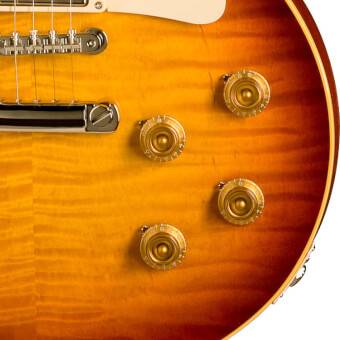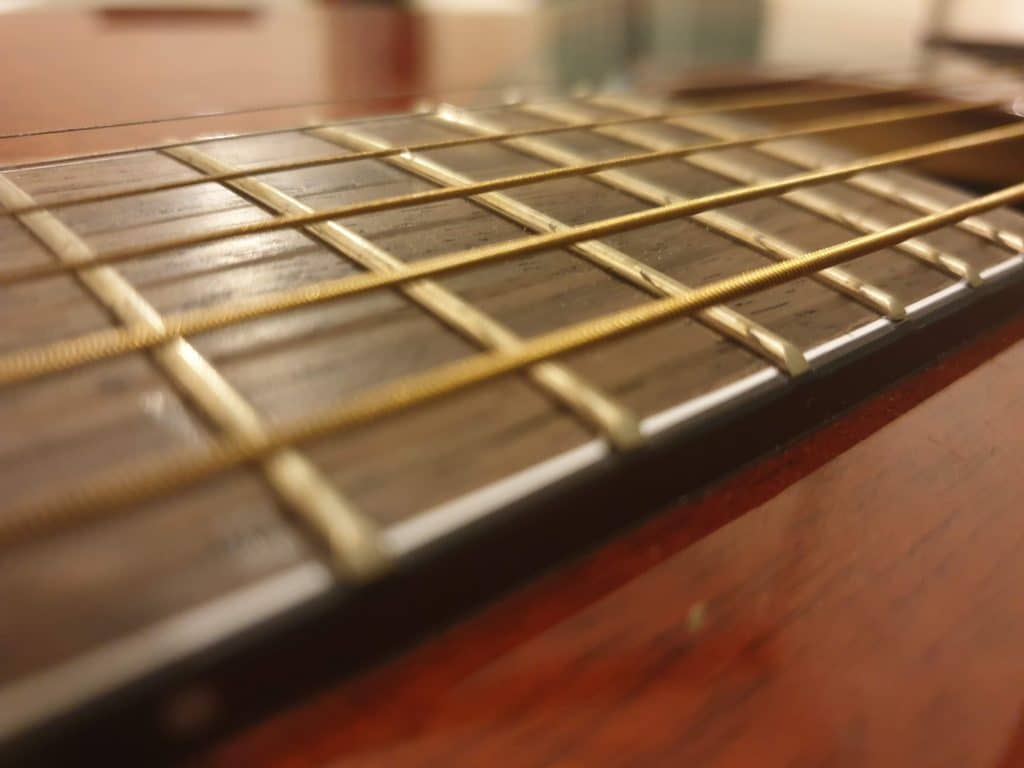We’ve all witnessed our heroes bending strings in big guitar solos but when you first try to perform this technique, you might run into some issues.
There are a few aspects to mastering string bending:
- Technique – the actual playing of the note while bending the string
- Pitching – the ability to hit the notes you aim for in tune
- Hearing – the ability to hear the correct target pitch
To ensure you have the best technique when bending, as a rule, I’d usually suggest bending with your third finger. This frees up your first and second finger to push down on the same string behind the fretted note as you bend. This will help support the bend and will distribute the tension of the string across the three fingers instead of just the one.
Let’s talk about the 3 most common types of string bends you’ll come across.
Full Tone Bends
A full tone bend (Also known as a full step bend) is when a note is bent up a full tone, or in the case of visualising this on the guitar, 2 frets. In this exercise, I have played 2 notes, 2 frets apart before moving back to the first note and bending it up to the pitch of the higher note. This exercise is useful for training your hearing and your fingers. Listen carefully to the higher note that you play, that’s your target pitch. When you bend the previous note, you’re aiming to hit the higher pitch.

Semi-Tone Bends
A semitone bend (Also known as a half step bend) is similar to a full tone bend except the target pitch is now only one fret higher, not two. This exercise follows the same principle, you play the higher note as your target note and then bend the previous note up to that pitch. This bend requires less finger strength, but I would still advise starting with your first and second fingers supporting the third until you feel your strong enough to drop a finger from this bend.

Quarter Tone Bends
A quarter tone bend (Also known as a quarter step bend) is the smallest of the bends that you’ll regularly come across. This style bend involves notes “between the frets”. A guitars fretboard is measured in semitones, but this particular bend does not take the note as far as a semitone higher. This bend is typically done with the slightest curl of the index finger and is often used to add a vocal-like quality to guitar playing. A singer would always have a slight variance to pitch when they sing and this bending style is used by guitarists that try to emulate that style of flow.

Now that we’ve learnt the 3 most common types of bending, let’s put them into some licks. The following licks are all in the key of A Minor and use the A Minor Pentatonic scale in the first shape. All the licks are transposable to any other key if required so you can add these to your lick arsenal and have fun with them!
Lick 1
Here we have a simple hammer-on from the 5th to the 7th fret of the G string followed by 2 full step bends. This lick is all quarter notes meaning it will last for one full band and each note will occupy one beat.

Lick 2
This lick is a good way to see how string bends can feed onto notes on other strings. Start with a full tone bend on the 7th fret of the G string followed by a hammer-on from the 5th to 8th frets of the B string. The bend should flow nicely into the hammer on, the target pitch of the bend is actually the same pitch as at the 5th fret on the B string. The lick ends with another full tone bend on the G string 7th fret and landing on the 5th fret of the G.

Lick 3
This lick is a great way to add some screaming bends to your blues or rock solos. There are two ways you can approach this lick, the first is to anchor your little finger on the 8th fret of the E and use your third finger (supported by your first and second) to bend the B string 8th fret. The other way is to use your third finger on the E string and bend with your middle finger (With support from the first). Keep both notes pressed down throughout the whole lick.

Lick 4
This is one of my favourite blues style licks. This comes straight from the playing style of Albert King and Stevie Ray Vaughan. Start with a full tone bend on the 10th fret of the E string followed by a halftone bend on the 9th fret. You could easily just release the initial 10th fret bend and play the 10th fret but going one note down and bending back up to the 10th fret will give your lead parts bags of Texas-style blues attitude.

Lick 5
Time to get a little more complex with this Jimmy Page inspired pentatonic run. Starting with a full tone bend before running up the 5th fret on both the B and E strings. This can be done by pushing both strings down simultaneously with your index finger. This lick is a great one to work on speed with. It sounds great as a slow lick but equally as awesome when you really pick the tempo up.

Lick 6
This lick is a BB King/Albert King style descending blues lick starting with two quarter-tone bends on the 8th fret of the E string before running back through some notes from the second shape of the Minor Pentatonic scale. The trick with the quarter-tone bends is to use them to add a vocal quality to this lick, remember to try and make it sing.

String bending is a great technique and once you learn it, it will be a regular and useful part of your trick bag. Be sure to spend the time early on getting to grips with the technique and the listening side of string bending to get the maximum benefit in the future.
—————————————————————–
About the Author
Leigh Fuge is an experienced guitar tutor and professional musician from the UK. He has a passion for blues guitar and has taught many students how to get started in this genre both in face to face lessons and written lessons. He also provides lesson content for MGR Music and selected partner companies to help guitarists all over the world grow and develop.
More Guitar Lessons @ The Blogging Musician

